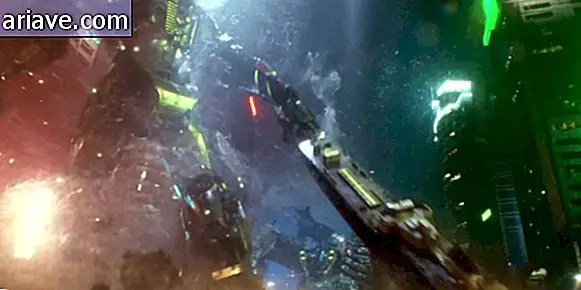Scientists watch black hole devour star for the first time
Black holes, as we explained in a story here from Mega Curious - which you can access through this link - are incredibly dense and huge regions of space in which the gravitational force is so extreme that nothing, not even light, can escape your attraction.
This feature makes black holes almost "invisible, " and to detect their presence astronomers rely on how their gravity affects stars, stars, and matter in space. In addition, there is still the theory of gases, which suggests that when a large volume of gas is sucked into one of these regions, a transformation of potential gravitational and kinetic energies occurs.
Thus, by spiraling into the hole, the kinetic energy is transformed into thermal energy due to the warming - which can reach up to one billion degrees centigrade - caused by the friction of matter. As a result, a plasma jet traveling at almost the speed of light eventually escapes near the edge of the black hole.
Confirmed Theory
According to Chris Wood of the Gizmag portal, a team of researchers from around the world has achieved two remarkable achievements: scientists have not only watched a black hole swallow a star - from start to finish - for the first time, but have confirmed that the Gas theory is correct.

According to Chris, the event began to be observed in December last year after researchers at Ohio State University detected the imminent destruction of the star while using an optical telescope in Hawaii.
Then a team from the University of Oxford, England, also pointed out equipment at the site - a radio telescope - and together the teams were able to gather data that allowed the event to be studied in detail.
Death announced
Scientists focused their attention on a supermassive black hole located about 300 million light-years from Earth and whose mass is approximately one million times that of our Sun. And the event offered researchers a unique - and very rare - opportunity. - to observe a star being swallowed by one of these regions of space, as well as to test the theory of gases.

As Chris said, astronomers found that the increasing light emission they detected escaping from inside the black hole came from a star it had just swallowed, not from an accretion disk - that is, the mass produced when a A black hole "devours" a star or matter - present at the venue prior to the event they witnessed.
With this, the researchers were able to confirm that the predicted by the theory of gases happens in the universe. In addition, scientists have revealed that very little is known about black hole destruction of stars, and that these events are more complicated than previously thought.
Their observations pointed out that the resulting stellar material can rapidly reorganize into jets, for example, and the data collected will allow astronomers to develop a more concise theory about how these events occur in the cosmos.
What do you think exists inside a black hole? Comment on the Mega Curious Forum











